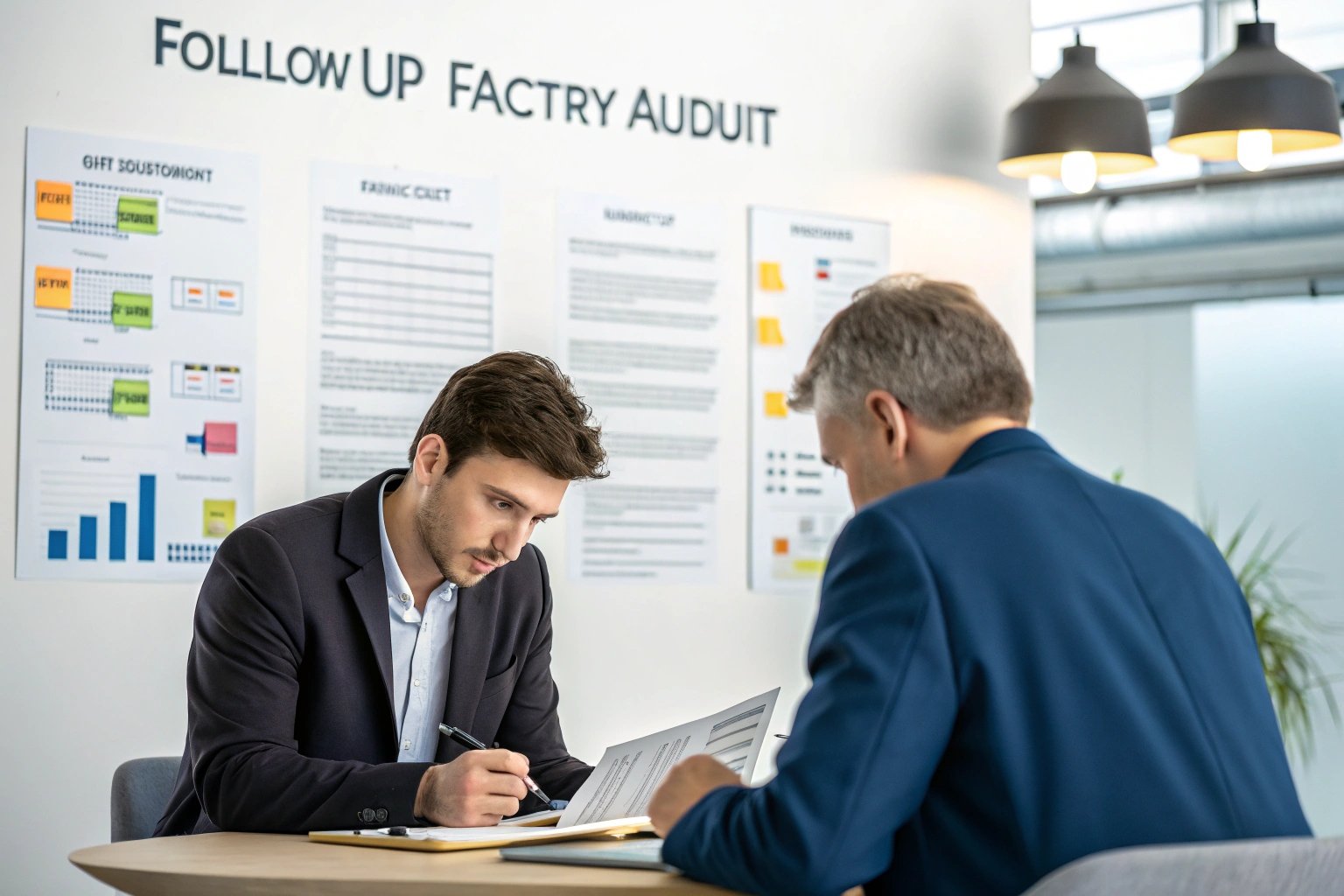
Factory audits are a critical part of ensuring your suppliers in Vietnam can meet your product standards. But what should you focus on during these audits to make sure everything goes smoothly?
During a factory audit, don't just focus on flashy facilities and well-established quality management systems. It's just as important to assess whether the supplier can produce your products effectively and manage quality control. A large factory might offer more resources, but it may also come with higher prices. Aim for a balance between scale and cost.
Let's dive deeper into the steps of a factory audit and the factors that will make your audits more efficient and effective.
What are the three major procedures in factory audit?
Factory audits in Vietnam, like anywhere else, follow a set of structured procedures. These steps ensure you gather the right information and assess the supplier's capabilities effectively.
The three major procedures in a factory audit include:
- Pre-Audit Preparation – Preparing audit checklists and gathering all necessary documents.
- On-Site Inspection – Visiting the factory to inspect processes and conditions.
- Post-Audit Evaluation – Reviewing findings and compiling a report for decision-making.
Each of these procedures plays a crucial role in ensuring that your audit is thorough and successful.

1. Pre-Audit Preparation
The most important step before visiting the factory is preparation. A comprehensive audit checklist is essential to ensure you cover all aspects during the on-site inspection1. This checklist should include items such as the factory layout, key production processes, equipment inspection, and specific quality control procedures.
2. On-Site Inspection
During the actual inspection, you'll need to evaluate the factory’s capabilities and procedures. This includes checking the production workflow from raw material intake to final product packaging. It's essential to observe equipment, production areas, quality control, and employee practices to get a clear picture of how the supplier operates.
3. Post-Audit Evaluation
After the audit, review all the collected information and assess whether the supplier meets your requirements. The goal is to identify areas where the supplier excels and areas where improvements are needed. This evaluation will also guide you in making informed decisions about whether to move forward with the supplier.
What are the key benefits of using an audit checklist?
Using an audit checklist2 makes the entire factory audit process more systematic and ensures nothing is overlooked.
The key benefits of using an audit checklist include:
- Consistency – Ensures that all audits follow the same procedure and key points are consistently covered.
- Efficiency – Helps save time by focusing on the most critical areas of the factory.
- Documentation – Provides a concrete record of the audit, which can be reviewed later and shared with other stakeholders.

Why is Consistency Important?
Without a checklist, you risk missing critical steps in the audit process. The checklist provides a standardized approach, ensuring that the audit focuses on the most important aspects and aligns with your expectations.
Efficiency in Auditing
With a pre-prepared checklist, the auditor can move through the factory systematically. It reduces time spent on unnecessary tasks, allowing you to focus on what really matters, like assessing the quality control procedures and verifying whether the supplier has the necessary capabilities.
Documentation for Future Reference
A comprehensive checklist also serves as documentation, ensuring that all key points were covered during the audit. This makes it easier to create reports, compare different suppliers, and make data-driven decisions based on facts rather than impressions.
What makes a factory audit successful?
A successful factory audit doesn’t just happen. It requires careful planning, attention to detail, and follow-up actions after the audit.
What makes a factory audit successful? Key factors include:
- Thorough Preparation – Preparing well in advance with a detailed checklist.
- Clear Communication – Ensuring the supplier understands your requirements.
- Follow-Up Actions – Evaluating audit findings and following up with the supplier.

Thorough Preparation3
Preparation is the cornerstone of a successful audit. Having a well-defined checklist with clear objectives ensures that the audit is focused and comprehensive. You should also gather any relevant documents in advance, such as the supplier's certifications, previous audit reports, and production schedules.
Clear Communication
Ensure that you communicate your requirements clearly to the supplier. Be explicit about what you expect in terms of quality control, equipment, production timelines, and product standards. This will allow the supplier to be well-prepared for your visit and give you a clearer picture of their capabilities.
Follow-Up Actions4
After the audit, reviewing the results and following up on any issues or improvements is crucial. Don't just rely on the audit findings to make a decision. Engage with the supplier to discuss areas that need attention and make sure they understand what improvements are necessary. Ongoing communication is key to ensuring long-term success.
Key Areas to Focus on During a Factory Audit
When conducting an on-site factory audit, the main areas you should focus on include the following:
1. Production Equipment and Facilities
Inspect the condition of the factory's main production equipment. Well-maintained equipment usually indicates that the factory is serious about quality and efficiency. Make sure the equipment is capable of handling your product requirements.
2. Quality Control Procedures
It's crucial to assess the factory’s quality control processes. This includes the methods they use to monitor production and ensure the products meet the required standards. Pay close attention to how they manage defects and their process for handling quality issues.
3. Final Inspection Process
The final inspection is the last defense against defects. Ensure that the factory has a strict process in place for the final inspection, checking for any defective products before shipment. A solid final inspection system will help ensure that no substandard products make it to you.
Factory Audit Execution Order
The execution order of the audit should follow the actual production process flow, ensuring you cover all the important steps in sequence. Here's the typical order:
| Stage | Focus Area | Details |
|---|---|---|
| Raw Material Area | Material Inspection | Check the quality of incoming raw materials. |
| Pre-production | Equipment and Process Setup | Observe the setup of machines and processes. |
| Production Process | Manufacturing Procedures (Coarse and Fine Processing) | Evaluate the production flow and process control. |
| Post-production | Inspection, Packaging, and Storage | Verify the final inspection and packaging stages. |

Why This Order Matters
By following the production flow, you ensure you see how raw materials are handled and processed all the way through to the final product. This helps you identify potential problems at any stage of production and address them proactively.
Key Audit Checkpoints to Include
Here's a checklist of additional key points you should include in your factory audit to ensure you're covering all the critical areas.
| Category | Key Points to Check | Purpose |
|---|---|---|
| Factory Infrastructure | Building Condition, Layout, Safety Systems | Ensures that the facility is up to standard for safety and production. |
| Workforce | Employee Skills, Training, and Compliance | Assess the competency of workers and whether they follow best practices. |
| Environmental Practices | Waste Management, Sustainability Efforts | Ensure the factory meets environmental regulations and practices sustainability. |
| Certifications & Standards | ISO Certifications, Local Compliance | Verifies the supplier meets international and local production standards. |
Why This Checklist is Essential
This checklist ensures that you focus on the most important aspects of the factory’s operation, both from a technical and a compliance standpoint. Missing any of these points could lead to long-term issues that impact product quality and delivery timelines.
Conclusion
During factory audits, it's essential to focus on more than just the appearance of the facilities or the certifications. You must evaluate the supplier’s actual ability to produce your product, control quality, and meet your cost requirements. With proper preparation, an effective checklist, and a clear audit process, you can ensure a successful factory audit that helps you make well-informed decisions.
This resource will offer valuable strategies and tips for conducting a comprehensive on-site inspection, crucial for assessing a factory's operational capabilities and quality control measures. ↩
Exploring this link will provide deeper insights into how an audit checklist enhances the efficiency, consistency, and documentation of factory audits, ensuring a thorough evaluation. ↩
Exploring this link will provide you with comprehensive strategies and checklists to ensure your factory audit is as effective and efficient as possible. ↩
Discover the critical steps to take post-audit to address findings and maintain supplier relationships for continuous improvement. ↩




